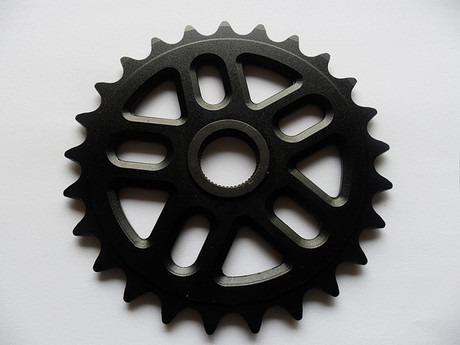What Are the Post-Processing Options for CNC Milled Aluminum Parts?

After your aluminum part leaves the CNC machine, its journey may not be complete. Various post-processing options can enhance its functionality, appearance, and durability while tailoring it to your exact specifications. Here's a list of common options:
Surface Finishing
l Smoothing: Provides a smoother surface finish. Sanding, polishing, and buffing are all options for varying levels of smoothness and gloss.
l Deburring: Removes sharp edges and burrs from machining, resulting in safer and smoother handling. Tumbling, vibratory finishing, and hand finishing are among the techniques employed.
l Texturing: Creates a textured surface for better grip, aesthetics, or functional applications such as heat dissipation. Sandblasting, bead blasting, and laser etching are a few examples.
Surface Treatments
l Anodizing: Forms a hard, corrosion-resistant oxide layer for increased wear resistance, aesthetics, and electrical insulation. Provides color options.
l Powder coating: Apply a decorative coating with high corrosion and wear resistance. Offers a wide variety of colors and textures.
l Painting: Offers a low-cost color and basic protection solution. Various paint types provide specific benefits, such as heat or chemical resistance.
l Plating: Deposits a thin layer of another metal (e.g., nickel or chrome) to improve conductivity, wear resistance, or appearance.
Other Post-Processing
l Heat treatment: Changes the internal structure of aluminum to improve its strength, hardness, or other properties. Annealing, quenching, and tempering are some of the techniques used.
l Impregnation: Fills aluminum pores with a sealant or lubricant to improve fluid and wear resistance.
l Laser marking: Logos, serial numbers, or other information are permanently imprinted on the part for identification or tracking.
Consulting a Professional
Collaboration with a reliable post-processing service provider is critical. They can make appropriate recommendations based on your specific needs and budget. Make recommendations about material compatibility and potential interactions. For the best results, adhere to proper pre-treatment and post-processing procedures. By utilizing the various post-processing options available, you can transform your CNC-milled aluminum parts from raw components to finished products that meet your exact specifications, maximizing functionality, aesthetics, and longevity. Learn more about CNC milling, including how it lowers manufacturing costs.
- Art
- Causes
- Crafts
- Dance
- Drinks
- Film
- Fitness
- Food
- Games
- Gardening
- Health
- Home
- Literature
- Music
- Networking
- Other
- Party
- Religion
- Shopping
- Sports
- Theater
- Wellness


